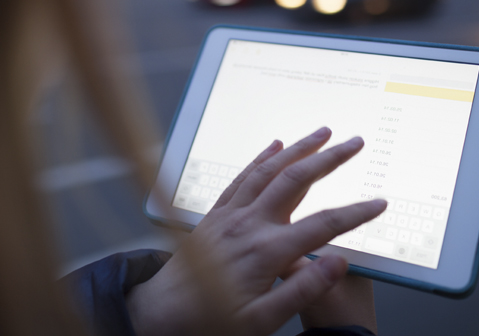Iker Merchán, author of thethesisLa brecha digital de género. Análisis de las causas de la menor influencia de las mujeres en internet (The digital gender gap. Analysis of the reasons behind the reduced influence of women on the Internet), asserts that despite the hopes placedin the Internet, the gap between men and women is considerable.This difference does not emerge so much in the quantitative aspect (number of men and women accessing the Internet), but in their capacity to influence subjects of public interest..
The digital gender gap in Internet use is qualitative, more than anything digitala
The digital gender gap in Internet use is qualitative, more than anything
First publication date: 20/08/2015

The author of the thesis pointed out that "the Internet is a technologically extraordinary medium of communication for putting an end to inequalities yet, despite that, it is not enough to put an end to gender inequality.So there is a pressing need to make the problem visible."Turned into figures, the digital gender gap reveals the following data, according to Merchán:"After analysing the 339 most influential blogs in Spain (the 10 most influential in 34 categories and the 100 most influential irrespective of their subject matter), the predominance of men over women is striking, no matter what the point of view chosen is;the total number of male bloggers is four times that of female ones and there are six blogs written only by men for every blog in which only women write. Only one fifth of the individual blogs are managed by a woman and the number of female bloggers in the mixed blog posts end up being less than a quarter.
Apart from analysing the most influential blogs, Iker Merchán interviewed 14 people (ten influential women on the Internet and four experts) and analysed the first ten editions of the annual classification "The 25 most influential Spaniards on the Internet" in the El Mundo Newspaper.Conclusions:the digital media, despite their theoretical advantages, have not led to an improvement in gender equality.On the other hand, although women access the Internet in the same numbers, they represent only 17% of the influential blogs, and the only subjects with a majority of women are Gender, Babies, Beauty, Housework, Fashion and TV.The numbers are equal in Gastronomy and Architecture.In the rest –three out of every four subjects- men predominate.Finally, 92% of the people regarded as influential on the Internet by the establishment are men.
"The problem is not in the Internet, but in society"
In Merchán's view, "having studied the opinions and analysed the people interviewed, one common idea emerges very clearly:the problem does not lie in the medium.A radio station broadcasts for a maximum number of hours per day; a newspaper has a more or less limited number of pages; but all of a sudden with the Internet there can be as many blogs as we want, on as many subjects as we want, as many Twitter accounts as we want, etc. So, in this scenario in which for the first time abundance takes precedence (a leap in terms of volume, like the one that moving from scribes to the printing press must have signified) and in which we can all carry ourown ‘printing press' around in our pockets in the form of a telephone, etc., the problem lies in society, not in the medium".
According to Merchán, "once Internet access is no longer a problem (in our environment it is virtually a universal service), the Internet can function as a macrosample that indicates whether or not we live in an equal society.A medium that has no technological barriers for a start, in which anyone can create his/her medium on any subject, but if it fails to present equality in subjects of public interest (politics, economy, the environment), it is telling us that as a society we have a problem".

